Contact Information
USDA-ARS
U.S. Pacific Basin Agricultural Research Center
64 Nowelo St.
Hilo, Hawaii 96720
Ph: (808) 959-4303
Fax: (808) 959-5470
|
|
Publications
via ARIS System
via Google Scholar
Education
- Ph.D., Entomology, North Carolina State University, 1993
- M.S., Entomology, Oregon State University, Entomology, 1984
- B.S., Plant and Soil Science, University of Vermont, 1980
Academic Positions
- 1997-present, Research Entomologist, USDA-ARS, U.S. Pacific Basin Agricultural Research Center, Hilo, Hawaii
- 1994-97, Post-Doctoral Fellowships, Department of Entomology and Center for Conservation Research & Training, University of Hawaii at Manoa
- 1992-93, Faculty Research Associate, Department of Entomology, University of Maryland, College Park, MD
Research Accomplishments
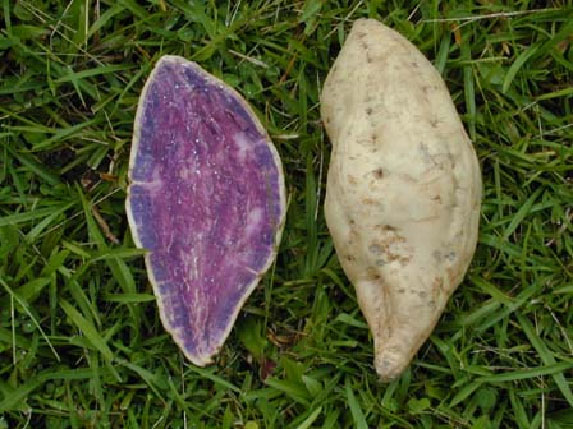 Since joining USDA-ARS in 1997, I have been conducting research to develop new or improved pest management methods and postharvest treatments for tropical fruits and vegetables to control quarantine pests that restrict exports from Hawaii; to increase product quality, marketability, and safety, while reducing treatment costs; and to develop holistic approaches to quarantine security that result in realistic pest-risk analyses and reduced treatment severity. My major research accomplishments are presented below: Since joining USDA-ARS in 1997, I have been conducting research to develop new or improved pest management methods and postharvest treatments for tropical fruits and vegetables to control quarantine pests that restrict exports from Hawaii; to increase product quality, marketability, and safety, while reducing treatment costs; and to develop holistic approaches to quarantine security that result in realistic pest-risk analyses and reduced treatment severity. My major research accomplishments are presented below:
Expanded Hawaiian Sweet Potato Production and Exports
Hawaii grows several unique varieties of sweet potato, including a purple-fleshed type. Hawaii was unable to export its unique varieties of sweet potatoes without quarantine treatment against West Indian sweetpotato weevil and sweetpotato vine borer (federal quarantine pests), and sweetpotato weevil (a quarantine pest for California and much of the southwestern U.S.). We developed an irradiation quarantine treatment against the sweet potato insects. In the three years since the irradiation treatment was approved by APHIS, sweet potato acreage has doubled and approximately 15 million pounds annually of sweet potatoes are currently exported with irradiation treatment from Hawaii to the U.S. mainland. Methyl bromide was previously the only accepted quarantine treatment for sweet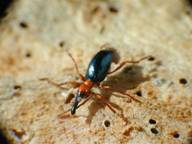 potatoes destined for export. Methyl bromide can cause damage to sweet potato, and consequently, only small volumes of sweet potatoes were exported. We proposed a high-dose irradiation treatment of 400 Gy for sweet potatoes in a report containing preliminary data on radio-tolerance of three quarantine pests. This was the first time APHIS considered the high-dose approach for controlling a pest complex until research is completed to confirm a lower dose. Our research later showed that 150 Gy was sufficient, and this dose has been approved by APHIS and adopted by the industry. Lowering the dose resulted in lower costs of treatment and better returns to the growers. potatoes destined for export. Methyl bromide can cause damage to sweet potato, and consequently, only small volumes of sweet potatoes were exported. We proposed a high-dose irradiation treatment of 400 Gy for sweet potatoes in a report containing preliminary data on radio-tolerance of three quarantine pests. This was the first time APHIS considered the high-dose approach for controlling a pest complex until research is completed to confirm a lower dose. Our research later showed that 150 Gy was sufficient, and this dose has been approved by APHIS and adopted by the industry. Lowering the dose resulted in lower costs of treatment and better returns to the growers.
Developed Export Procedures for Hawaiian Mangoes
For over 50 years, mango seed weevil has impeded mango exports from Hawaii because there were no approved quarantine treatments to control this pest. Mango production has remained minimal in Hawaii as a result. We developed an irradiation quarantine treatment against the mango seed weevil in mangos for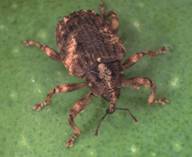 export to the U.S. mainland. Our studies on irradiation treatment of mango seed weevil indicated that a dose of 300 Gy is sufficient to sterilize weevils. Separately, we also showed that, contrary to previous dogma, mango seed weevil infestation does not affect marketability of mango fruit or the germination capacity of mango seeds. Based on our work, which included a new, less-than-probit-9 approach to quarantine security, a final rule was published by USDA-APHIS on May 26, 2002 recommending a minimum absorbed dose of 300 Gy to control mango seed weevil in exported mangos. This was the first time that this approach was used to gain approval for a quarantine treatment, and the first time that an irradiation treatment was approved by APHIS for an insect other than a fruit fly. The irradiation treatment for control of the mango seed weevil opened U.S. mainland markets, and facilitated the increase in acreage of mango planted in Hawaii for the export market. export to the U.S. mainland. Our studies on irradiation treatment of mango seed weevil indicated that a dose of 300 Gy is sufficient to sterilize weevils. Separately, we also showed that, contrary to previous dogma, mango seed weevil infestation does not affect marketability of mango fruit or the germination capacity of mango seeds. Based on our work, which included a new, less-than-probit-9 approach to quarantine security, a final rule was published by USDA-APHIS on May 26, 2002 recommending a minimum absorbed dose of 300 Gy to control mango seed weevil in exported mangos. This was the first time that this approach was used to gain approval for a quarantine treatment, and the first time that an irradiation treatment was approved by APHIS for an insect other than a fruit fly. The irradiation treatment for control of the mango seed weevil opened U.S. mainland markets, and facilitated the increase in acreage of mango planted in Hawaii for the export market.
Promoted Generic Irradiation Treatments to Safeguard American Agriculture
A generic treatment is a single dose that controls a group of pests on a variety of commodities. Most quarantine treatments are developed for one pest and one commodity at a time, and research may take several years. Generic treatments for broad groups of pests and commodities accelerate the research, shorten treatment development, and save resources. In 2003, we (with G. Hallman) recommended a phytosanitary dose of 150 Gy for all tephritid fruit flies and 400 Gy for all insects (except pupae and adults of Lepidoptera) based on a critical examination of the literature and crucial work that they had done. On January 27, 2006, USDA APHIS published a landmark rule accepting the two generic doses, which is expected to accelerate the process of approving irradiation quarantine treatments for specific crops and rapidly expand exports. A further advantage of generic treatments is that if a new tephritid fruit fly species or other quarantine pest should invade Hawaii, exports using irradiation as a phytosanitary treatment would not be interrupted because the generic doses would also apply to the new species. Hawaii uses the generic irradiation treatments to export 10 million pounds of tropical fruits annually. Recently, India, Thailand, Vietnam, and Mexico began exporting fruits to the United States using the generic irradiation treatment (400 Gy). literature and crucial work that they had done. On January 27, 2006, USDA APHIS published a landmark rule accepting the two generic doses, which is expected to accelerate the process of approving irradiation quarantine treatments for specific crops and rapidly expand exports. A further advantage of generic treatments is that if a new tephritid fruit fly species or other quarantine pest should invade Hawaii, exports using irradiation as a phytosanitary treatment would not be interrupted because the generic doses would also apply to the new species. Hawaii uses the generic irradiation treatments to export 10 million pounds of tropical fruits annually. Recently, India, Thailand, Vietnam, and Mexico began exporting fruits to the United States using the generic irradiation treatment (400 Gy).
Evaluated Treatment Effects on Quality of Several Tropical Fruits
 Post-treatment fruit quality is an important aspect of developing quarantine treatments for horticultural crops. Hawaii has multiple quarantine treatment options for several of its export fruits, but no comparative fruit quality data existed. We showed that the approved irradiation treatments for rambutan, longan, and lychee are less damaging to fruit quality than the approved heat treatments. His fruit quality research with rambutan, longan, and lychee will help Hawaii's growers make an informed choice between available quarantine treatments. Based on our research, irradiation treatment is used for 100% of the rambutan, longan and lychee crop exported from Hawaii (total 600,000 pounds in 2004-05, farmgate value $2 million). Post-treatment fruit quality is an important aspect of developing quarantine treatments for horticultural crops. Hawaii has multiple quarantine treatment options for several of its export fruits, but no comparative fruit quality data existed. We showed that the approved irradiation treatments for rambutan, longan, and lychee are less damaging to fruit quality than the approved heat treatments. His fruit quality research with rambutan, longan, and lychee will help Hawaii's growers make an informed choice between available quarantine treatments. Based on our research, irradiation treatment is used for 100% of the rambutan, longan and lychee crop exported from Hawaii (total 600,000 pounds in 2004-05, farmgate value $2 million).
Ensured Continuous Export of Hawaiian Papaya Following White Peach Scale Invasion
Fresh papaya exports from Hawaii are valued at $12 million. The spread of white peach scale throughout the island of Hawaii, where most of the papaya crop is grown, was a threat to papaya exports, particularly shipments to California. We conducted research showing that approved vapor heat and irradiation quarantine treatments for papaya to control fruit flies also control white peach scale. This research on white peach scale has helped prevent interruption of export shipments of papaya. Recently, we initiated a classical biological control program against white peach scale using the parasitoid Encarsia diaspidicola to help reduce field populations of white peach scale and lower the quarantine risk. grown, was a threat to papaya exports, particularly shipments to California. We conducted research showing that approved vapor heat and irradiation quarantine treatments for papaya to control fruit flies also control white peach scale. This research on white peach scale has helped prevent interruption of export shipments of papaya. Recently, we initiated a classical biological control program against white peach scale using the parasitoid Encarsia diaspidicola to help reduce field populations of white peach scale and lower the quarantine risk.
Evaluated Nontarget Effects of Biological Control
Controversy exists over the ecological risks associated with the introduction of exotic natural enemies to control alien insect and weed pests. I led a team of researchers that evaluated nontarget effects of a biological control program against southern green stink bug in Hawaii. Using museum and field surveys, and laboratory host preference tests, we assessed claims that parasitoid releases against the stink bug, a significant pest of many horticultural crops in Hawaii, have lead to the decline of the native Hawaiian koa bug, Coleotichus blackburniae. A study of southern green stink bug enemies in Hawaii (with T. Johnson) showed that accidentally introduced parasitoids and generalist predators (ants, spiders) probably have a greater impact on native koa bug populations than the purposely-introduced biological control agents, contrary to what was previously thought. Retrospective studies of previous biological control releases can provide insights to reduce risks in future biological control programs, and will improve the scientific basis for using biological control in pest management. We (with J. Duan) convened the first symposium on nontarget effects of biological control at the 1997 Annual Meeting of the ESA, and he prepared a multi-authored book to stimulate interest in the topic. against southern green stink bug in Hawaii. Using museum and field surveys, and laboratory host preference tests, we assessed claims that parasitoid releases against the stink bug, a significant pest of many horticultural crops in Hawaii, have lead to the decline of the native Hawaiian koa bug, Coleotichus blackburniae. A study of southern green stink bug enemies in Hawaii (with T. Johnson) showed that accidentally introduced parasitoids and generalist predators (ants, spiders) probably have a greater impact on native koa bug populations than the purposely-introduced biological control agents, contrary to what was previously thought. Retrospective studies of previous biological control releases can provide insights to reduce risks in future biological control programs, and will improve the scientific basis for using biological control in pest management. We (with J. Duan) convened the first symposium on nontarget effects of biological control at the 1997 Annual Meeting of the ESA, and he prepared a multi-authored book to stimulate interest in the topic.
Developed Forecast Procedures for Green Stink Bug in Macadamia Nut
Southern green stink bug is a serious pest of macadamia nut that normally causes <5% damage to harvested nuts. In 2002 and again in 2004 severe stink bug outbreaks resulted in 50% damage in many orchards and closure of several farms. I led a team of researchers that developed methods to forecast southern green stink bug injury in macadamia nut. Hawaii growers did not monitor southern green stink bug populations as no traps or other direct methods were available. We developed a technique using ruthenium red dye to stain stink bug feeding probes. The dye can be used on nuts of all maturity stages to measure feeding activity throughout the year and help predict outbreaks. This research has helped protect a $40 million per year industry.
Explored Risk-Based Alternatives to Probit 9 That Maintain Export Security
We showed that less-than-probit-9 approaches to quarantine security are appropriate for quarantine pests in horticultural commodities that are rarely infested or are poor hosts, and, hence, data for a quarantine treatment could be generated by testing 10,000 or fewer insects with no survivors, compared to 93,613 insects to demonstrate the traditional probit 9 efficacy (99.9968% mortality). Applying the risk-based alternative treatment efficacy approach to pests on rarely infested or poor hosts will lower the number of required test insects needed for developing quarantine treatments, saving time and resources, and helping farmers export their crop on a more-timely basis. Dr. Follett applied this approach to Cryptophlebia, a quarantine pest that rarely infests lychee and longan in Hawaii, and APHIS accepted data showing the efficacy of heat and irradiation quarantine treatments against Cryptophlebia after testing of approximately 11,000 insects.
Improved Methods for Evaluating Nonhost Status of Horticultural Crops for Fruit Flies
The U.S. requires that quarantine treatments for high risk pests such as fruit flies achieve 99.9968% (probit 9) mortality at the 95% confidence level. To achieve 99.9968% response at the 95% confidence level, a minimum of 93,613 insects must be tested with no survivors. Other countries require testing at the 99.99% mortality level which requires testing 29,956 insects. We (with M. Hennessey,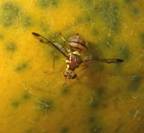 USDA-APHIS) proposed that a similar level of host testing should be required during nonhost status testing with fruit flies of fruits and vegetables so that its equivalency with postharvest treatments could be demonstrated. Sample size would be determined by the number of insects exposed to fruit or the number of fruit collected to inspect for insects. Their recommendation is being included in a standard for determination of host status in fruit flies currently under preparation by USDA-APHIS. Incorporating sample size and confidence levels into host status testing protocols along with efficacy will lead to greater consistency by regulatory decision-makers in interpreting results and, therefore, more technically sound decisions on host status. USDA-APHIS) proposed that a similar level of host testing should be required during nonhost status testing with fruit flies of fruits and vegetables so that its equivalency with postharvest treatments could be demonstrated. Sample size would be determined by the number of insects exposed to fruit or the number of fruit collected to inspect for insects. Their recommendation is being included in a standard for determination of host status in fruit flies currently under preparation by USDA-APHIS. Incorporating sample size and confidence levels into host status testing protocols along with efficacy will lead to greater consistency by regulatory decision-makers in interpreting results and, therefore, more technically sound decisions on host status.
Service, Leadership and Participation in Professional Activities:
- Editor, Proceedings of the Hawaiian Entomological Society (1999-2004)
- Associate Editor, Journal of Economic Entomology (2002- present)
- Associate Editor, Entomologia Experimentalis et Applicata, (2006-present)
- Affiliate Professor of Entomology, College of Agriculture, Forestry, and Natural Resource Management, University of Hilo
- Affiliate Faculty in the Tropical Conservation Biology and Evolutionary Studies program, University of Hawaii at Hilo
- Graduate Faculty at the University of Hawaii at Manoa
- President, Hawaiian Entomological Society (1999-2000)
- International Atomic Energy Agency (IAEA) expert missions to Thailand, Turkey, Bangladesh, Guatemala, and Argentina
- Served on graduate committees for 2 Master's and 3 PhD students; supervisor to 2 postdocs
- U.S. Army Reserves, Major, preventative medicine (medical entomology, 2002-2010)
- Hawaii Academy of Sciences
- Sigma Xi, Scientific Honorary Society
- Entomological Society of America
Honors, Awards, Achievements and Recognition:
- Seymour Horticultural Award, Department of Plant & Soil Science, University of Vermont, 1980
- Graduated cum laude, Department of Plant & Soil Sciences, University of Vermont, 1980
- Sigma Xi, elected 1987
- USDA Spot Award for promotion of civil rights, 1998
- USDA Certificate of Merit for superior or outstanding research contributions in developing irradiation quarantine treatments for Hawaii agricultural exports, 2000 - 2010
- ESA Distinguished Achievement Award in Horticultural Entomology, Pacific Branch and National award recipient, 2007
- USDA Secretary's Group Honor Award for Excellence, Irradiation and Indian mango approval team, 2007
- Federal Laboratory Consortium for Technology Transfer (FLC) Award for Excellence in Technology Transfer, Commercial Adoption of Phytosanitary Irradiation Treatment Protocols for Tropical Fruit, 2010
|

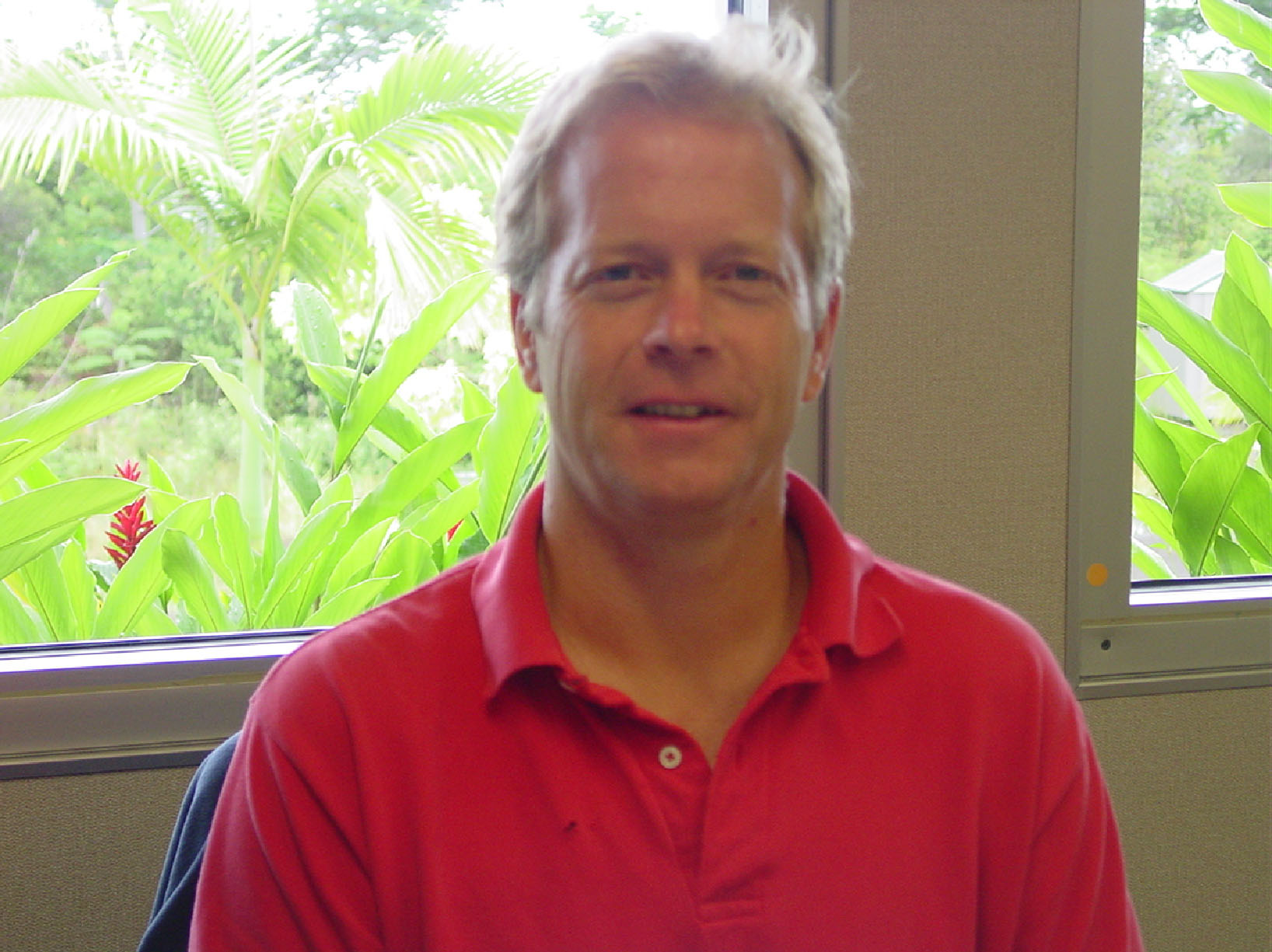
 Since joining USDA-ARS in 1997, I have been conducting research to develop new or improved pest management methods and postharvest treatments for tropical fruits and vegetables to control quarantine pests that restrict exports from Hawaii; to increase product quality, marketability, and safety, while reducing treatment costs; and to develop holistic approaches to quarantine security that result in realistic pest-risk analyses and reduced treatment severity. My major research accomplishments are presented below:
Since joining USDA-ARS in 1997, I have been conducting research to develop new or improved pest management methods and postharvest treatments for tropical fruits and vegetables to control quarantine pests that restrict exports from Hawaii; to increase product quality, marketability, and safety, while reducing treatment costs; and to develop holistic approaches to quarantine security that result in realistic pest-risk analyses and reduced treatment severity. My major research accomplishments are presented below: potatoes destined for export. Methyl bromide can cause damage to sweet potato, and consequently, only small volumes of sweet potatoes were exported. We proposed a high-dose irradiation treatment of 400 Gy for sweet potatoes in a report containing preliminary data on radio-tolerance of three quarantine pests. This was the first time APHIS considered the high-dose approach for controlling a pest complex until research is completed to confirm a lower dose. Our research later showed that 150 Gy was sufficient, and this dose has been approved by APHIS and adopted by the industry. Lowering the dose resulted in lower costs of treatment and better returns to the growers.
potatoes destined for export. Methyl bromide can cause damage to sweet potato, and consequently, only small volumes of sweet potatoes were exported. We proposed a high-dose irradiation treatment of 400 Gy for sweet potatoes in a report containing preliminary data on radio-tolerance of three quarantine pests. This was the first time APHIS considered the high-dose approach for controlling a pest complex until research is completed to confirm a lower dose. Our research later showed that 150 Gy was sufficient, and this dose has been approved by APHIS and adopted by the industry. Lowering the dose resulted in lower costs of treatment and better returns to the growers. export to the U.S. mainland. Our studies on irradiation treatment of mango seed weevil indicated that a dose of 300 Gy is sufficient to sterilize weevils. Separately, we also showed that, contrary to previous dogma, mango seed weevil infestation does not affect marketability of mango fruit or the germination capacity of mango seeds. Based on our work, which included a new, less-than-probit-9 approach to quarantine security, a final rule was published by USDA-APHIS on May 26, 2002 recommending a minimum absorbed dose of 300 Gy to control mango seed weevil in exported mangos. This was the first time that this approach was used to gain approval for a quarantine treatment, and the first time that an irradiation treatment was approved by APHIS for an insect other than a fruit fly. The irradiation treatment for control of the mango seed weevil opened U.S. mainland markets, and facilitated the increase in acreage of mango planted in Hawaii for the export market.
export to the U.S. mainland. Our studies on irradiation treatment of mango seed weevil indicated that a dose of 300 Gy is sufficient to sterilize weevils. Separately, we also showed that, contrary to previous dogma, mango seed weevil infestation does not affect marketability of mango fruit or the germination capacity of mango seeds. Based on our work, which included a new, less-than-probit-9 approach to quarantine security, a final rule was published by USDA-APHIS on May 26, 2002 recommending a minimum absorbed dose of 300 Gy to control mango seed weevil in exported mangos. This was the first time that this approach was used to gain approval for a quarantine treatment, and the first time that an irradiation treatment was approved by APHIS for an insect other than a fruit fly. The irradiation treatment for control of the mango seed weevil opened U.S. mainland markets, and facilitated the increase in acreage of mango planted in Hawaii for the export market. literature and crucial work that they had done. On January 27, 2006, USDA APHIS published a landmark rule accepting the two generic doses, which is expected to accelerate the process of approving irradiation quarantine treatments for specific crops and rapidly expand exports. A further advantage of generic treatments is that if a new tephritid fruit fly species or other quarantine pest should invade Hawaii, exports using irradiation as a phytosanitary treatment would not be interrupted because the generic doses would also apply to the new species. Hawaii uses the generic irradiation treatments to export 10 million pounds of tropical fruits annually. Recently, India, Thailand, Vietnam, and Mexico began exporting fruits to the United States using the generic irradiation treatment (400 Gy).
literature and crucial work that they had done. On January 27, 2006, USDA APHIS published a landmark rule accepting the two generic doses, which is expected to accelerate the process of approving irradiation quarantine treatments for specific crops and rapidly expand exports. A further advantage of generic treatments is that if a new tephritid fruit fly species or other quarantine pest should invade Hawaii, exports using irradiation as a phytosanitary treatment would not be interrupted because the generic doses would also apply to the new species. Hawaii uses the generic irradiation treatments to export 10 million pounds of tropical fruits annually. Recently, India, Thailand, Vietnam, and Mexico began exporting fruits to the United States using the generic irradiation treatment (400 Gy). Post-treatment fruit quality is an important aspect of developing quarantine treatments for horticultural crops. Hawaii has multiple quarantine treatment options for several of its export fruits, but no comparative fruit quality data existed. We showed that the approved irradiation treatments for rambutan, longan, and lychee are less damaging to fruit quality than the approved heat treatments. His fruit quality research with rambutan, longan, and lychee will help Hawaii's growers make an informed choice between available quarantine treatments. Based on our research, irradiation treatment is used for 100% of the rambutan, longan and lychee crop exported from Hawaii (total 600,000 pounds in 2004-05, farmgate value $2 million).
Post-treatment fruit quality is an important aspect of developing quarantine treatments for horticultural crops. Hawaii has multiple quarantine treatment options for several of its export fruits, but no comparative fruit quality data existed. We showed that the approved irradiation treatments for rambutan, longan, and lychee are less damaging to fruit quality than the approved heat treatments. His fruit quality research with rambutan, longan, and lychee will help Hawaii's growers make an informed choice between available quarantine treatments. Based on our research, irradiation treatment is used for 100% of the rambutan, longan and lychee crop exported from Hawaii (total 600,000 pounds in 2004-05, farmgate value $2 million). grown, was a threat to papaya exports, particularly shipments to California. We conducted research showing that approved vapor heat and irradiation quarantine treatments for papaya to control fruit flies also control white peach scale. This research on white peach scale has helped prevent interruption of export shipments of papaya. Recently, we initiated a classical biological control program against white peach scale using the parasitoid Encarsia diaspidicola to help reduce field populations of white peach scale and lower the quarantine risk.
grown, was a threat to papaya exports, particularly shipments to California. We conducted research showing that approved vapor heat and irradiation quarantine treatments for papaya to control fruit flies also control white peach scale. This research on white peach scale has helped prevent interruption of export shipments of papaya. Recently, we initiated a classical biological control program against white peach scale using the parasitoid Encarsia diaspidicola to help reduce field populations of white peach scale and lower the quarantine risk. against southern green stink bug in Hawaii. Using museum and field surveys, and laboratory host preference tests, we assessed claims that parasitoid releases against the stink bug, a significant pest of many horticultural crops in Hawaii, have lead to the decline of the native Hawaiian koa bug, Coleotichus blackburniae. A study of southern green stink bug enemies in Hawaii (with T. Johnson) showed that accidentally introduced parasitoids and generalist predators (ants, spiders) probably have a greater impact on native koa bug populations than the purposely-introduced biological control agents, contrary to what was previously thought. Retrospective studies of previous biological control releases can provide insights to reduce risks in future biological control programs, and will improve the scientific basis for using biological control in pest management. We (with J. Duan) convened the first symposium on nontarget effects of biological control at the 1997 Annual Meeting of the ESA, and he prepared a multi-authored book to stimulate interest in the topic.
against southern green stink bug in Hawaii. Using museum and field surveys, and laboratory host preference tests, we assessed claims that parasitoid releases against the stink bug, a significant pest of many horticultural crops in Hawaii, have lead to the decline of the native Hawaiian koa bug, Coleotichus blackburniae. A study of southern green stink bug enemies in Hawaii (with T. Johnson) showed that accidentally introduced parasitoids and generalist predators (ants, spiders) probably have a greater impact on native koa bug populations than the purposely-introduced biological control agents, contrary to what was previously thought. Retrospective studies of previous biological control releases can provide insights to reduce risks in future biological control programs, and will improve the scientific basis for using biological control in pest management. We (with J. Duan) convened the first symposium on nontarget effects of biological control at the 1997 Annual Meeting of the ESA, and he prepared a multi-authored book to stimulate interest in the topic. USDA-APHIS) proposed that a similar level of host testing should be required during nonhost status testing with fruit flies of fruits and vegetables so that its equivalency with postharvest treatments could be demonstrated. Sample size would be determined by the number of insects exposed to fruit or the number of fruit collected to inspect for insects. Their recommendation is being included in a standard for determination of host status in fruit flies currently under preparation by USDA-APHIS. Incorporating sample size and confidence levels into host status testing protocols along with efficacy will lead to greater consistency by regulatory decision-makers in interpreting results and, therefore, more technically sound decisions on host status.
USDA-APHIS) proposed that a similar level of host testing should be required during nonhost status testing with fruit flies of fruits and vegetables so that its equivalency with postharvest treatments could be demonstrated. Sample size would be determined by the number of insects exposed to fruit or the number of fruit collected to inspect for insects. Their recommendation is being included in a standard for determination of host status in fruit flies currently under preparation by USDA-APHIS. Incorporating sample size and confidence levels into host status testing protocols along with efficacy will lead to greater consistency by regulatory decision-makers in interpreting results and, therefore, more technically sound decisions on host status.